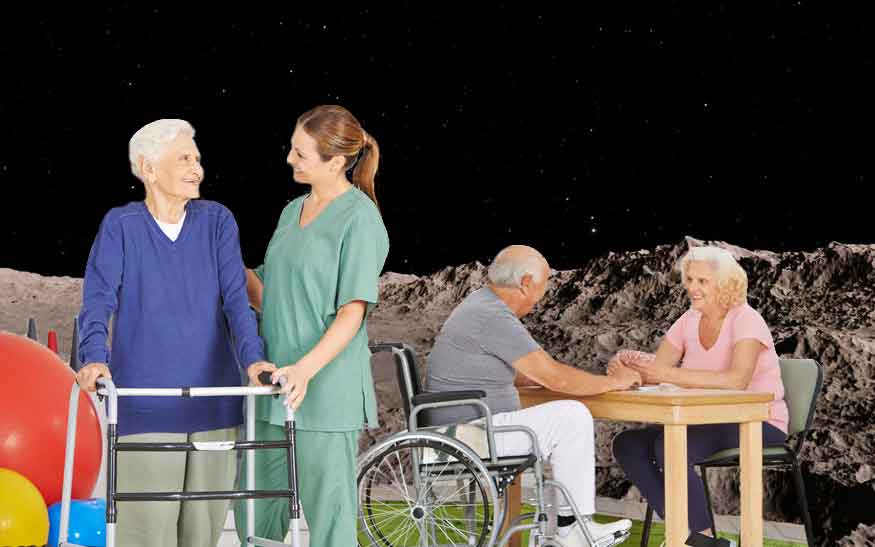
If there’s something social workers and hospitalists are really good at it’s placement. But every once in a while a difficult placement comes along. In today’s post, we walk through one of these scenarios: placing a patient on the moon.
STEP 1: Consult PT and OT.
Look past the fact that PT and OT are divorced and get them on board. Get Speech Therapy (ST) on board too. This is lunar placement we’re talking about, so get your sh*t together!
STEP 2: Consult Social Services.
This assumes PT, OT, and ST recommend a lunar stay post-hospitalization. Placement on the moon takes some time, so you want to give your social worker at least 24 hours notice.
STEP 3: Insurance coverage and authorization.
Before you launch your patient into space, make sure insurance is willing to cover a brief stay on the moon. Or if the patient was recently on the moon, make sure he or she hasn’t run out of days there.
STEP 4: Transportation.
Unfortunately, cab vouchers won’t do the trick here. Nor will pneumatic tubes or UberGURNEYs. Contact NASA to arrange a space shuttle on call for transport. Or call Richard Branson, that Virgin CEO. He has some fancy spaceships, right?!
STEP 5: Does the patient need oxygen?
If the patient has COPD or another chronic lung condition, the patient will need oxygen during transport. If the patient is otherwise healthy, well, the patient will still need oxygen during transport. It is outer space after all.
STEP 6: Consult Nutrition.
It takes a few days to get to the moon. The nutritionist can help make sure the patient has enough freeze-dried and dehydrated snacks because nothing ruins a space placement like hypoglycemia.
STEP 7: Does the patient have fear of flying?
Haldol. Ativan.
STEP 8: Does the patient have decision-making capacity?
If the answer is no, someone needs to go to the moon first and sign the patient in. If the transport team travels 3 days to the moon and there’s no family to sign them in, guess what? The patient’s coming right back to Earth. That’s one hell of a bounce back.
STEP 9: Don’t forget narcotic prescriptions.
Lunar facilities require a valid prescription in order for patients to continue receiving narcotics on the moon. Zero gravity is a bonus for those joints, but lunar opioid withdrawals are the devil.







